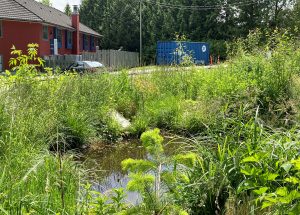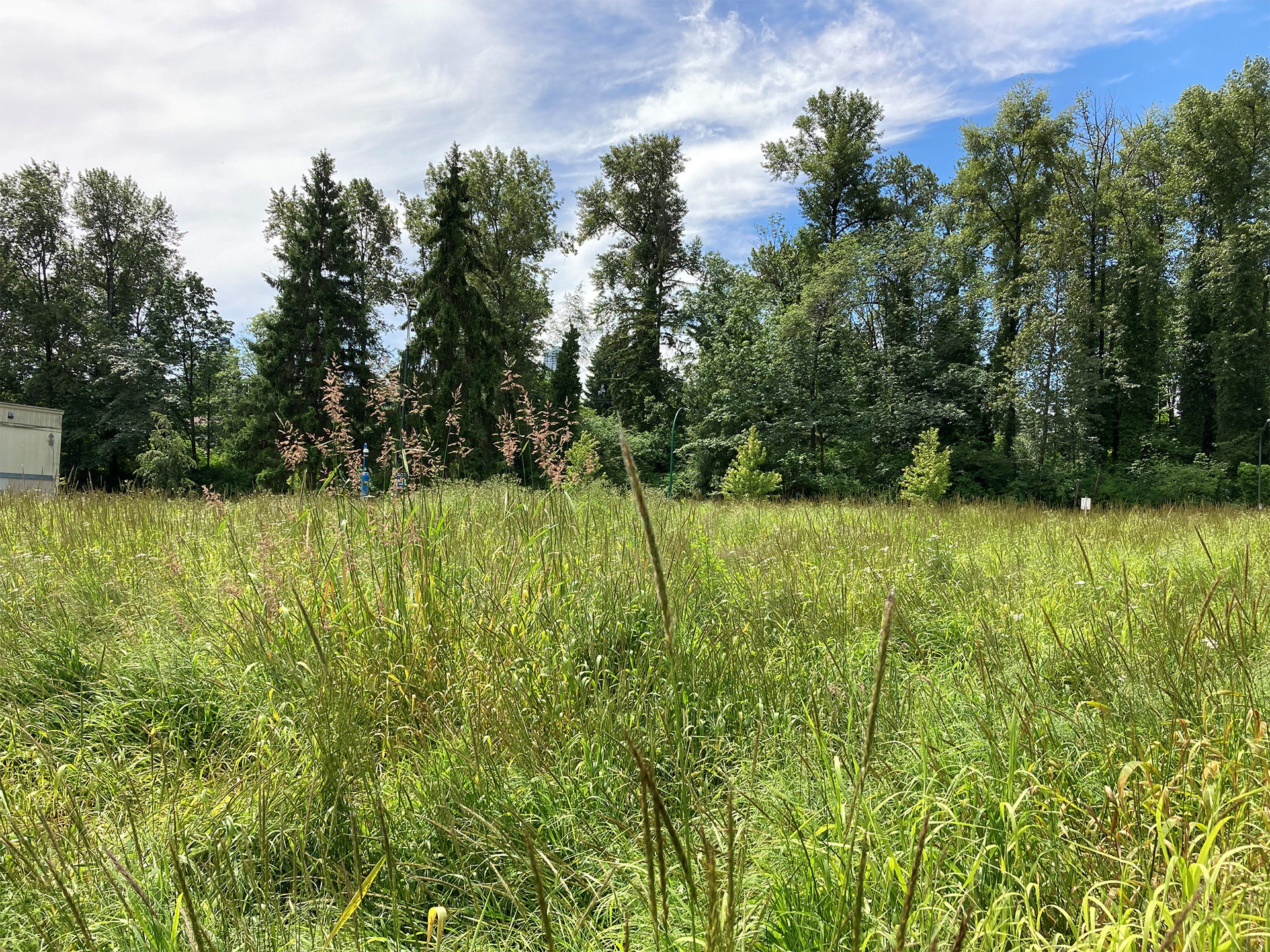BCIT has completed the ecological restoration of 3,860 m2 of land adjacent to Guichon Creek, using soil dug out as part of the building excavation for the new Health Sciences Centre (HSC) opening this fall.
Parking lot O was previously a gravel car park that sat alongside Guichon Creek and because of its position the site was an ideal space for an ecological restoration. This gravel lot contributed to silt and sediment runoff into Guichon creek.
The project was instigated by BCIT ecological restoration student capstone projects. BCIT Facilities and Campus Development worked with a group of project partners including Keystone Environmental, Binnie Civil Engineering, and Holaco Construction on the restoration. The project made use of soil and boulders dug from the Health Sciences site to create an extension of the Guichon forest area. Once the earthworks had been completed the area was planted with native plants to provide habitats for small mammals, birds and insects.

This landscape provides a large pollinator garden, wildlife poles created from downed old trees, and a water retention pond that feeds back into the creek. There is a new path that runs across the restored site to allow people to enjoy this slice of urban nature. BCIT will also be installing informational signage and wild bee shelters along the path to help educate the community and promote the BeeCIT pollinator program.
The project is part of BCIT’s wider plan to restore Guichon Creek into a rich ecological environment that joins with the Still Creek watershed to form a larger area of protected wetland habitat. The next phase of restoration is a part of the Trades and Technology complex project.
Joe Cosh, BCIT’s Associate Director of Project Services says, “This was an important project because restoring Guichon Creek is a major goal of the Campus Plan. It was done in a way that enhances nature but also includes trails, so our campus community can enjoy the area.”

Riverside areas (described as a riparian habitat) are some of the richest and most threatened habitats in British Columbia. Creek banks provide habitat for a wide variety of songbirds and insects. Native plants like Red-Osier Dogwood, Salal, and Oregon Grape also thrive in these areas.
“Being able to use excavated material from the HSC project provided two benefits,” Joe adds. “It reduces the ecological footprint and cost of the project because we didn’t have bring large amounts of material onto the site. As the plants grow in the ecological diversity of the site will grow further.”
Read the BCIT Campus Plan and learn more about our vision for the future of the Burnaby Campus.

This is a wonderful transformation of a gravel parking lot! What a great full-circle restoration.